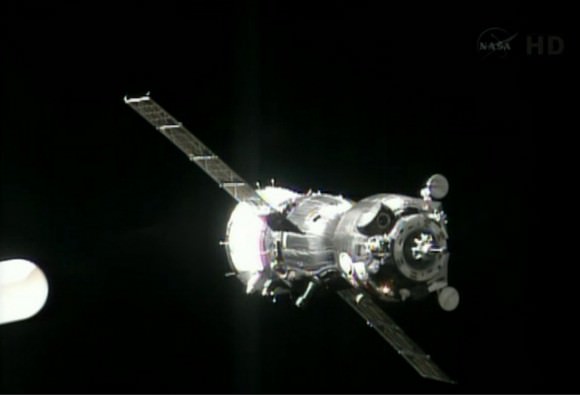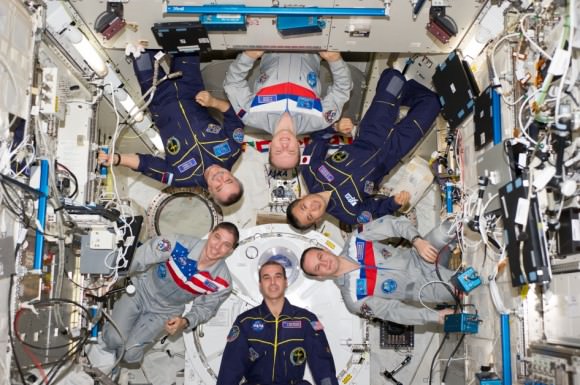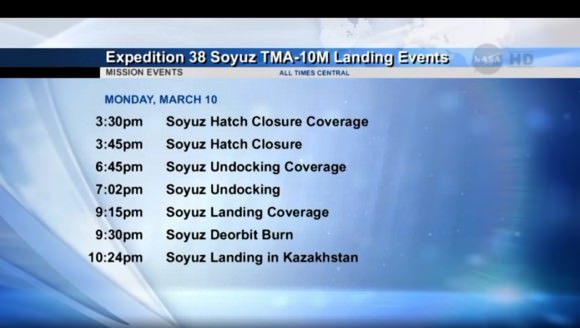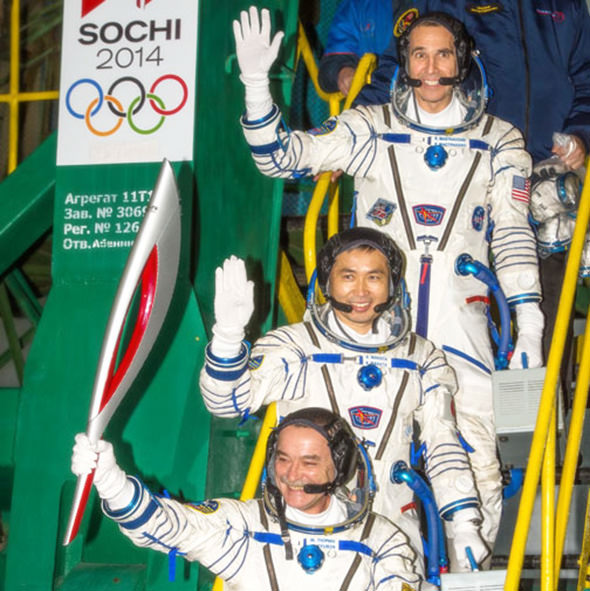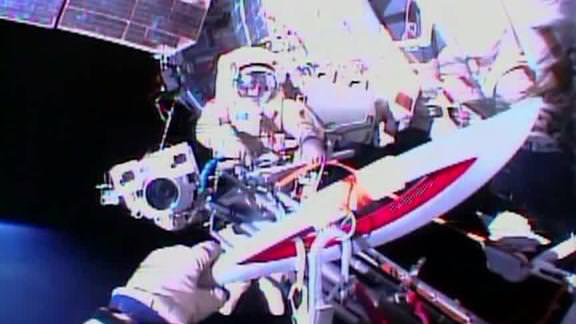UPDATE: The Expedition 38 crew landed safely at about 11:24 p.m. EDT (3:24 a.m. UTC) on March 11. You can catch the highlights of the crew extraction at this NASA video.
They fixed a broken space station and participated in a space Olympic torch relay. And now that they’ve spent their allotted six months in space, it’s time for Expedition 38 to come home.
The action starts today around 4:30 p.m. EDT (8:30 p.m. UTC) with the hatch closure ceremony, which you can watch in the video, with landing expected at 11:24 p.m. EDT (3:24 a.m. UTC). We have full details of the schedule below the jump.
Expedition 38’s landing crew includes Russian astronauts Oleg Kotov and Sergey Ryazanskiy, and NASA astronaut Michael Hopkins. Kotov was the one in charge of the station while four spacewalks and hundreds of experiments took place, not to mention visits from three vehicles. This past weekend, he passed the baton to Japanese astronaut Koichi Wakata, making Wakata the first person from his country to assume control of station.
Farewells and hatch closure will start around 4:30 p.m. EDT (8:30 p.m. UTC) on NASA Television, with undocking occurring at 8:02 p.m. EDT (12:02 a.m. UTC.) As usual, the crew will be in a Russian Soyuz spacecraft for the landing, making their way back to an area near Dzhezkazgan, Kazakhstan. The deorbit burn will take place around 10:30 p.m. EDT (2:30 a.m. UTC), and landing at 11:24 p.m. EDT (3:24 a.m. UTC).
We recommend you tune into NASA TV slightly before each of these events, and to expect that the timing might be variable as mission events warrant. NASA’s full schedule (in central time) is at the bottom of this story.
